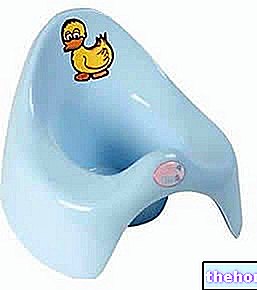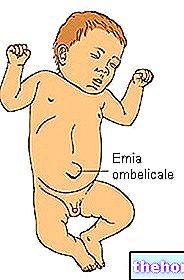Generality
Baby food are foods with a mixed consistency between solid and liquid, used above all for infant weaning; They do NOT require chewing, therefore, more generally, they are very useful in case of incomplete dental structure.

Baby food are based on fruit, vegetables, meat and / or fish, and (contrary to what many may think) they are NOT blended or ground foods.
The homogenization process is much more effective than the previous ones, since it uses a physical method necessary to simplify and make the treated food completely UNIFORM (mixture of a suspension without concentration gradient or of an emulsion). There are various types of homogenizers, although the most classic is certainly the "homogenizing valve". This works by converting the potential energy (high pressure and low speed) into kinetic energy (low pressure and high speed); in practice, the food and the water in which it will be diluted are introduced into a high pressure circuit which has valve open in a narrow orifice; the size of the opening determines the size of the fragments and confers homogeneity between them.
The first homogenizer was invented for milk processing by a Frenchman (Gaulin) in the 19th century. In fact, for the uninitiated, raw milk is a particularly complex and structured food as a solution - suspension. Raw milk therefore tends to separate into fat globules and water portion but, by applying homogenization, the lipid particles are destroyed and diluted uniformly. The same happens in the production of baby food: while blending a food with water this tends to separate, homogenizing it creates a perfect equilibrium of the solution-suspension-emulsion.
NB. The small homogenizers sold for the autonomous production of baby food work in a much more similar way to the very common blenders; the main difference is the greater effectiveness in cutting the blades.
Nutritional composition of baby food
Baby food are considered semi-solid foods useful in complementary feeding to breast milk (called weaning or weaning).
The nutritional composition of baby food varies significantly depending on the type of food. In theory, they should be produced from raw materials and water only, without adding anything else; however, several simple sugars are added in various fruit-based formulas. Those based on plants have an energetic prevalence of carbohydrates; on the contrary, the homogenized meat or fish are rich in high biological value proteins.
As for the non-energetic nutrients, the baby food (in the right portions) fully satisfy the needs of mineral salts (essential above all calcium and phosphorus) and vitamins (not to neglect the contribution of vitamins D and those B1 , B2 and PP). Furthermore, they are all low in cholesterol and saturated fats, and provide a few grams of dietary fiber. In this regard, we remind you that the need for fiber is NOT comparable to that of man and that, in the case of constipation, it is likely that it is a matter of a high water reabsorption in the portion of the large intestine.
In reality, the function and composition of baby food is not always the same and changes considerably depending on the time and nutritional needs. The very first formulas, generally based on fruit, are administered around the 4-6th month of life (on the recommendation of the pediatrician) and have the purpose of accustoming the child to a food consistency different from the liquid one which, for its part, it is still very present (generally, in this phase, baby food is ONLY one meal out of 4-5 total). Later (in the second phase), these foods will represent an integral part of the overall diet and will alternate with homogenized meat, fish, vegetables, cereals and legumes; not to forget also the use of other foods for infancy and the integration with certain products such as extra virgin olive oil, parmesan and egg yolk, but once again on the advice of the pediatrician and only when weaning is well underway. NB. We remind you that fruit purees often contain added sugars and being sweet they help to establish and consolidate an "INCORRECT eating habit."
Baby food must be managed on the basis of nutritional needs and the overall diet. This is not a well manageable phase without the support of a specialist and only the pediatrician is able to guide parents towards the correct and gradual introduction of the various products. This is due to the fact that the nutritional needs of the child are quite different from those of an adult and change rapidly with growth (even between one semester and the next). To get an "idea of the real needs from the 6th month up to the first year of life, below is a table extrapolated from the LARN (Recommended Nutrient Intake Levels for the Italian Population) which summarizes the most important notions to take into account .

The formulas of baby food are designed to bring the right amount of nutrients to the body in the first phase of growth. Attention, however! This does not mean that they are harmless products or to be managed lightly. In fact, the weaning baby does not have the same ability to metabolization of a developed organism and is particularly sensitive to protein and saline excess (with possible kidney suffering).
Furthermore, remember that the baby food contains many types of foods, but not all are of the hypoallergenic type (ie characterized by a low probability of an immune response from the organism). Personally, I always suggest avoiding (at least initially, and especially in children with relatives suffering from allergies) the administration of products at risk; instead it is advisable to prefer homogenized products containing foods that could be included in a hypoallergenic or elementary diet. We remind you that the onset of food allergies in children is closely related to the diet of the first childhood; some risk factors are: absence of breast milk, early introduction (always 6th month) of solid foods (including baby food), exclusion of certain products within the first year (for example fish), lack of prebiotics etc. Therefore, in the choice of the first homogenized, in addition to taking into consideration With the possible presence of allergies in the family, it is also very important to remember that the epidemiology of these conditions is quite important and could develop Cross-Reactivity (sensitivity to other products) or occur primarily without any family correlation.
Below is a summary table of the statistical details concerning the percentages of incidence risk towards certain allergens.
Food safety of baby food
In theory, since these are foods intended mainly for infant feeding, it is logical to deduce that baby food is strictly and strictly controlled. Unfortunately, it seems that the health assessment of baby food varies considerably depending on who carries it out!
To tell the truth, we do not know what the real reliability of the collateral studies carried out on certain products is but, for disclosure correctness, I think it is at least necessary to mention the most striking one. The first survey on the wholesomeness of baby food took into consideration the measurement of estrogens in those of meat, since they are considered responsible for the onset of early telarca in girls (development of the breasts before the 8th year of life). The alarm bell was the finding of 331 cases of this development complication recorded between the years 2003 and 2006. The investigation had a negative result and the baby food were considered safe.
According to an in-depth study carried out by Beppe Grillo and two scientists from Modena, some of the homogenized products (by the best known companies) analyzed contained dangerous environmental pollutants. These are heavy metals (silicon, aluminum, strontium, iron, titanium, etc.) coming (perhaps) from waste-to-energy plants (waste incinerators). On the other hand, no one was able or wanted to deepen the subject and after the umpteenth control by the food safety authorities (... hopefully) the news was denied.
Then, in 2012, after the denunciation of another 106 cases of early telarca recorded in the previous two years, the Turin prosecutor started "another investigation into the presence of hormones in baby food. Another hole in the water."
Despite everything, in 2011, the Italian Federation of Pediatricians (FIMP) published a poster in which it RECOMMENDED the use of products for early childhood (including baby food) with respect to fresh foods. According to some pediatricians, baby food, being more controlled, they would be even safer than common foods. A demonstration of this theory is the age of onset of early telarca, which affects infants only when they start eating common meat; on the other hand, it is difficult to believe that a similar condition develops in a very short time and it cannot be ruled out that (despite the denials) hormonal exposure begins with the intake of the same baby food.




























